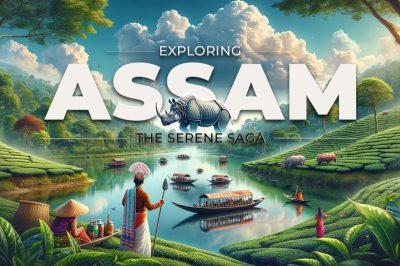🚗🏍️ Welcome to Motoshare!
Turning Idle Vehicles into Shared Rides & New Earnings.
Why let your bike or car sit idle when it can earn for you and move someone else forward?
From Idle to Income. From Parked to Purpose.
Earn by Sharing, Ride by Renting.
Where Owners Earn, Riders Move.
Owners Earn. Riders Move. Motoshare Connects.
With Motoshare, every parked vehicle finds a purpose. Partners earn. Renters ride. Everyone wins.
1. Kaziranga National Park
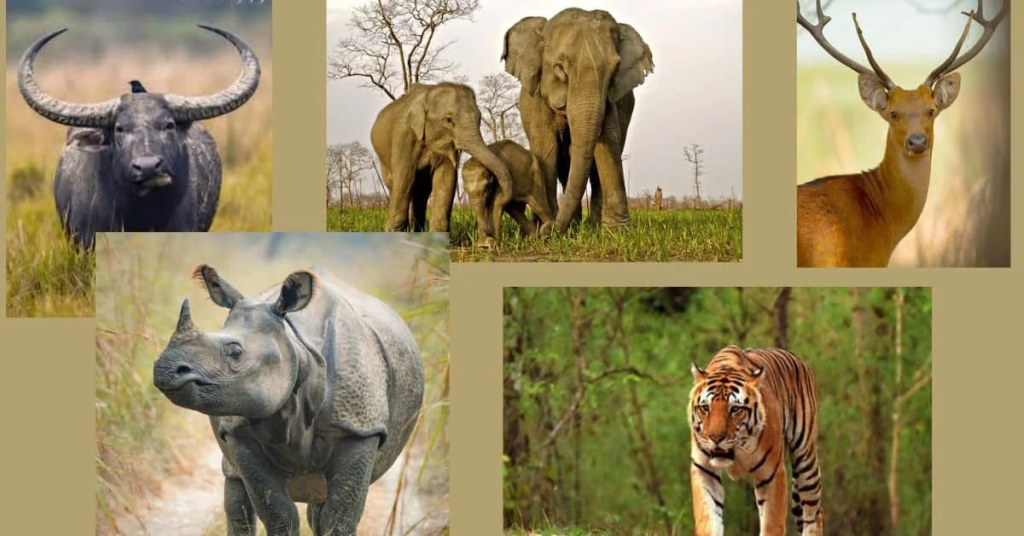
Introduction:
Kaziranga National Park, a UNESCO World Heritage Site, is one of India’s most famous wildlife sanctuaries, located in the state of Assam. Spread over an area of approximately 430 square kilometers, Kaziranga is renowned for its population of the Great Indian One-Horned Rhinoceros. The park is also home to a diverse range of flora and fauna, including tigers, elephants, wild water buffaloes, and various species of birds. The park’s lush greenery, tall elephant grass, and numerous water bodies make it a haven for wildlife enthusiasts and nature lovers.
Major Attractions:
- One-Horned Rhinoceros: The main attraction of Kaziranga, the park is home to more than two-thirds of the world’s population of this endangered species.
- Kaziranga Elephant Safari: Explore the park’s dense forests and grasslands on an elephant-back safari, offering close encounters with wildlife.
- Jeep Safaris: Covering the park’s four zones—Kohora, Bagori, Agaratoli, and Burapahar—jeep safaris provide an opportunity to see tigers, elephants, and other wildlife.
- Kaziranga Orchid Park: A unique attraction, this park showcases a variety of orchids and other indigenous plants, reflecting the region’s rich biodiversity.
- Kaziranga National Park Museum: Offers insights into the park’s history, wildlife, and conservation efforts.
Activities and Experiences:
- Wildlife Safaris: The park offers both jeep and elephant safaris, allowing visitors to explore the diverse ecosystems and spot various wildlife species.
- Bird Watching: Kaziranga is a bird watcher’s paradise with over 450 species of birds, including migratory species, making it a great spot for birding.
- Photography: Capture the park’s breathtaking landscapes, wildlife, and the iconic one-horned rhinoceros.
- Boat Ride on Brahmaputra River: Enjoy a tranquil boat ride on the Brahmaputra River, which borders the park and offers sightings of river dolphins and various bird species.
- Cultural Experiences: Engage with the local culture by visiting nearby villages, participating in traditional dance performances, and exploring local crafts.
Best Time to Visit:
The best time to visit Kaziranga National Park is between November and April. The park remains closed during the monsoon season from May to October due to heavy rainfall and flooding.
- November to February: The winter months offer cool and pleasant weather, ideal for wildlife safaris and bird watching.
- March to April: Early summer is a great time to visit as the temperatures are mild, and the chances of spotting wildlife are high due to the drying water bodies.
Nearby Attractions:
- Majuli Island: Located about 100 km from Kaziranga, Majuli is the world’s largest river island and a cultural hotspot known for its monasteries and vibrant festivals.
- Orang National Park: Often referred to as the “Mini Kaziranga,” this park is located approximately 75 km from Kaziranga and is known for its population of one-horned rhinoceroses.
- Nameri National Park: Situated about 80 km from Kaziranga, Nameri is a haven for bird watchers and offers scenic trekking and river rafting experiences.
- Tezpur: A historical town located around 50 km from Kaziranga, Tezpur is known for its ancient temples, scenic beauty, and cultural heritage.
- Hollongapar Gibbon Sanctuary: About 90 km from Kaziranga, this sanctuary is dedicated to the conservation of the Hoolock Gibbon, India’s only ape species.
2. Majuli Island

Here is the information about Majuli Island in a tabular format:
| Category | Details |
|---|---|
| Introduction | Majuli Island, located in the Brahmaputra River, is the largest river island in the world. It is a cultural hub of Assam, known for its rich heritage, especially its neo-Vaishnavite monasteries called Satras. The island’s unique landscape and vibrant community make it a serene retreat for nature lovers and cultural enthusiasts. |
| Major Attractions | 1. Satras (Monasteries): Auniati Satra, Kamalabari Satra, Dakhinpat Satra. |
| 2. Mask Making at Samaguri Satra: Traditional mask-making craft used in religious performances. | |
| 3. Majuli Cultural Landscape: Traditional villages showcasing the life of Mishing, Deori, and Assamese communities. | |
| 4. Pottery Villages: Salmora village, known for its age-old pottery techniques. | |
| 5. Bird Watching: Opportunities to see migratory and native birds, especially in winter. | |
| Activities & Experiences | 1. Cultural Tours: Visit various Satras for spiritual and cultural insights. |
| 2. Mask Making Workshops: Learn traditional mask-making at Samaguri Satra. | |
| 3. Boat Rides on the Brahmaputra: Scenic boat rides around the island. | |
| 4. Cycling Around the Island: Explore the island’s landscape and villages by bicycle. | |
| 5. Photography: Capture the serene landscapes, vibrant cultural scenes, and diverse wildlife. | |
| Best Time to Visit | October to March: Ideal time for pleasant weather and cultural activities. |
| April to June: Early summer visit is possible but warmer temperatures. | |
| July to September: Monsoon season brings heavy rains and flooding, making access challenging. | |
| Nearby Attractions | 1. Jorhat: 20 km away, known as the “Tea Capital of India,” offering tea garden tours and cultural sites. |
| 2. Gibbon Wildlife Sanctuary: 50 km from Majuli, home to India’s only ape species, the Hoolock Gibbon. | |
| 3. Dhekiakhowa Bornamghar: A historic Namghar with a continuously burning lamp for over 450 years, near Jorhat. | |
| 4. Sivasagar: 55 km away, an ancient city with historical monuments like Rang Ghar, Talatal Ghar, and Sivadol Temple. | |
| 5. Nagaland: Nearby state known for its unique tribal culture, festivals, and scenic landscapes. |
3. Guwahati

Introduction:
Guwahati, the largest city in Assam and the gateway to Northeast India, is a vibrant blend of ancient history and modern development. Situated on the banks of the Brahmaputra River, Guwahati is a major cultural, educational, and commercial hub. The city is known for its rich cultural heritage, bustling markets, and sacred temples, making it a must-visit destination for travelers exploring Assam and the Northeast.
Major Attraction:
- Kamakhya Temple: One of the most revered Shakti Peethas in India, Kamakhya Temple is dedicated to Goddess Kamakhya and attracts thousands of pilgrims every year. The temple is known for its unique rituals and festivals, especially the Ambubachi Mela.
- Umananda Island: Also known as Peacock Island, Umananda is the smallest inhabited riverine island in the world. It houses the Umananda Temple, dedicated to Lord Shiva, and offers stunning views of the Brahmaputra River.
- Assam State Museum: Located in the heart of the city, the Assam State Museum showcases the rich history, culture, and heritage of Assam through its extensive collection of artifacts, sculptures, and exhibits.
- Guwahati Zoo (Assam State Zoo cum Botanical Garden): The largest zoo in Northeast India, Guwahati Zoo is home to a diverse range of animals, birds, and reptiles, as well as a botanical garden with a variety of plant species.
- Nehru Park: A popular park in the city, Nehru Park offers a serene environment with well-maintained gardens, musical fountains, and statues depicting classical dance forms of Assam.
Activities and Experiences:
- River Cruises on the Brahmaputra: Enjoy a relaxing cruise on the Brahmaputra River, offering scenic views of the city skyline, sunset, and the tranquil waters. Some cruises also offer cultural performances and traditional Assamese cuisine.
- Temple Tours: Explore the various temples in Guwahati, including Kamakhya Temple, Umananda Temple, and Navagraha Temple, to experience the spiritual essence of the city.
- Shopping at Fancy Bazaar: Visit Fancy Bazaar, one of Guwahati’s oldest and busiest markets, where you can shop for traditional Assamese silk, handicrafts, jewelry, and local produce.
- Visit to Sualkuchi: Known as the “Manchester of Assam,” Sualkuchi is a nearby village famous for its silk weaving industry. Here, you can witness the intricate process of silk weaving and purchase authentic Assamese silk products.
- Wildlife Exploration: Spend a day at the Guwahati Zoo and Botanical Garden, where you can see a variety of wildlife, including the one-horned rhinoceros, and enjoy the lush greenery of the botanical garden.
Best Time to Visit:
The best time to visit Guwahati is from October to April when the weather is pleasant and ideal for sightseeing and outdoor activities.
- October to February: The winter months offer cool and comfortable weather, perfect for exploring the city’s attractions.
- March to April: Early summer is also a good time to visit, with mild temperatures and blooming flora.
- May to September: The monsoon season brings heavy rainfall, which can disrupt travel plans, but it also enhances the natural beauty of the region.
Nearby Attractions:
- Hajo: Located about 24 km from Guwahati, Hajo is a unique pilgrimage center for Hindus, Muslims, and Buddhists. Key attractions include Hayagriva Madhava Temple, Powa Mecca, and Kedareswara Temple.
- Sualkuchi: About 35 km from Guwahati, Sualkuchi is known for its silk weaving industry and is a great place to learn about and purchase traditional Assamese silk.
- Pobitora Wildlife Sanctuary: Approximately 48 km from Guwahati, this sanctuary is famous for its high density of one-horned rhinoceroses and is an excellent spot for wildlife safaris.
- Madan Kamdev: Around 40 km from Guwahati, Madan Kamdev is an archaeological site featuring ancient temple ruins, often referred to as the “Khajuraho of Assam.”
- Kaziranga National Park: Located about 200 km from Guwahati, Kaziranga is a UNESCO World Heritage Site known for its population of one-horned rhinoceroses and other wildlife.
4. Manas National Park

Here is the information about Manas National Park in a tabular format:
| Category | Details |
|---|---|
| Introduction | Manas National Park, located in the foothills of the Eastern Himalayas in Assam, is a UNESCO World Heritage Site, a Tiger Reserve, and a Biosphere Reserve. Spanning over 950 square kilometers, the park is renowned for its rich biodiversity, including endangered species such as the Assam Roofed Turtle, Hispid Hare, Golden Langur, and Pygmy Hog. Manas is also famous for its stunning landscapes, which include grasslands, tropical forests, and the Manas River flowing through it. |
| Major Attractions | 1. Wildlife Safaris: Explore the park’s diverse ecosystems and spot tigers, elephants, rhinos, and other wildlife during jeep safaris. |
| 2. Manas River: The river is a major attraction, offering scenic views and opportunities for river rafting. | |
| 3. Bansbari Tea Estate: Located near the park, this tea estate provides a glimpse into Assam’s tea culture and offers beautiful views of the surrounding landscape. | |
| 4. Bird Watching: Manas is a bird watcher’s paradise, home to over 450 species of birds, including the Bengal Florican, Giant Hornbill, and several migratory species. | |
| 5. Royal Manas National Park (Bhutan): Adjacent to Manas, this park in Bhutan extends the conservation area and can be visited as part of a cross-border wildlife tour. | |
| Activities & Experiences | 1. Jeep Safaris: Take guided jeep safaris through the park to explore its wildlife and natural beauty. |
| 2. River Rafting: Enjoy river rafting on the Manas River, which offers both calm waters and thrilling rapids, surrounded by scenic landscapes. | |
| 3. Elephant Safaris: Experience the park’s wildlife from a unique perspective by taking an elephant-back safari. | |
| 4. Bird Watching: Engage in bird watching activities, especially during the migratory season, to spot rare and exotic bird species. | |
| 5. Nature Walks: Explore the park’s flora and fauna on foot with guided nature walks, ideal for those who want a closer look at the park’s biodiversity. | |
| Best Time to Visit | November to April: The best time to visit Manas National Park is from November to April when the weather is pleasant, and the park is fully accessible for safaris and outdoor activities. |
| Winter (November to February): Cool and dry weather, ideal for wildlife spotting and enjoying outdoor activities. | |
| Spring (March to April): Mild temperatures and blooming flora make this period a great time for nature walks and bird watching. | |
| Nearby Attractions | 1. Barpeta: Located about 30 km from Manas, Barpeta is known for its ancient temples and rich Vaishnavite culture. |
| 2. Bodoland: Explore the cultural heritage of the Bodo community in the nearby Bodoland Territorial Area, including traditional dances, music, and crafts. | |
| 3. Hajo: Approximately 60 km from Manas, Hajo is a unique pilgrimage center for Hindus, Muslims, and Buddhists, with notable sites like Hayagriva Madhava Temple and Powa Mecca. | |
| 4. Guwahati: About 140 km from Manas, Guwahati is the largest city in Assam, offering a blend of historical temples, markets, and cultural experiences. | |
| 5. Royal Manas National Park (Bhutan): Located across the border in Bhutan, this park extends the conservation area and can be visited for cross-border wildlife tours. |
5. Sivasagar
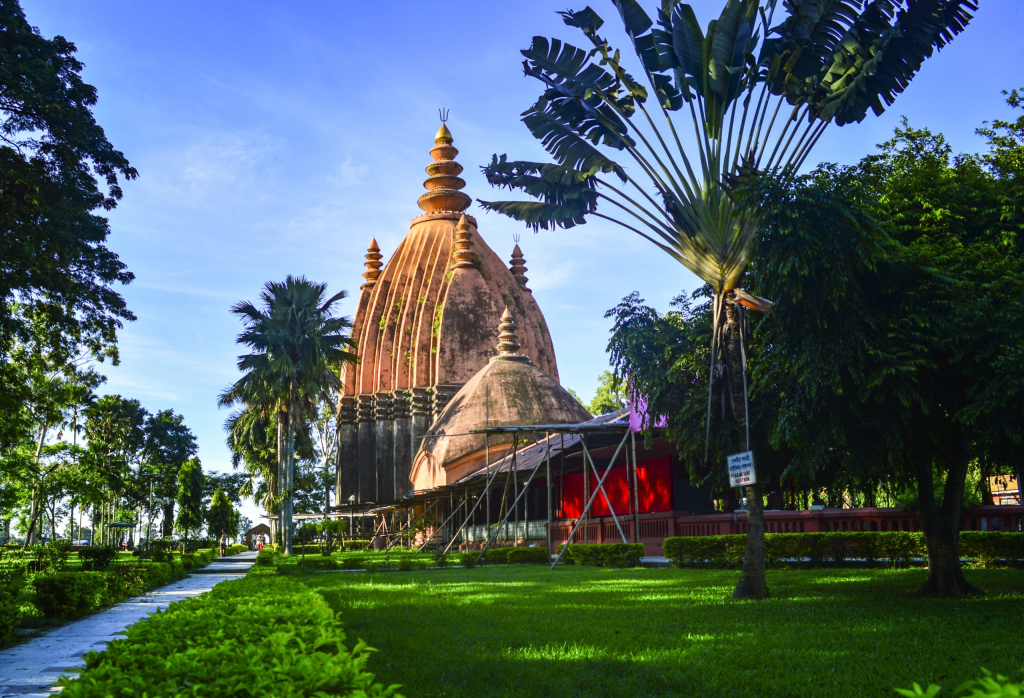
Introduction:
Sivasagar, formerly known as Rangpur, is a historical town in the state of Assam, India. It served as the capital of the powerful Ahom Kingdom for more than 600 years. The town is renowned for its historical monuments, which reflect the grandeur of the Ahom dynasty. Sivasagar is dotted with ancient temples, palaces, and tanks (artificial lakes) that stand as a testament to the region’s rich cultural heritage. The town is a significant destination for those interested in the history and culture of Assam.
Major Attractions:
- Rang Ghar: Known as Asia’s oldest amphitheater, Rang Ghar was used by the Ahom kings to witness games like buffalo fights and other sports. The two-storied structure is an architectural marvel and a symbol of the Ahom dynasty’s opulence.
- Talatal Ghar: A seven-storied palace, with three floors underground and four above, Talatal Ghar is one of the grandest architectural achievements of the Ahom era. It was used as a military base and is connected to the nearby Dikhow River by a series of underground tunnels.
- Sivadol: Located on the banks of the Sivasagar Tank (Borpukhuri), Sivadol is one of the tallest Shiva temples in India. The temple complex also includes the Vishnudol and Devidol temples, dedicated to Lord Vishnu and Goddess Durga, respectively.
- Joyasagar Tank and Temples: Built by the Ahom king Rudra Singha in memory of his mother, this tank is one of the largest man-made lakes in India. The surrounding temples, including the Joysagar Sivadol, are significant religious sites.
- Charaideo Maidams: Often referred to as the “Pyramids of Assam,” Charaideo is the burial site of Ahom kings and queens. The maidams (mounds) are sacred and an important part of Assam’s cultural heritage.
Activities and Experiences:
- Historical Exploration: Explore the historical monuments of Sivasagar, including Rang Ghar, Talatal Ghar, and the temples, to gain insights into the architecture and history of the Ahom dynasty.
- Boat Rides on Sivasagar Tank: Enjoy a peaceful boat ride on the Sivasagar Tank (Borpukhuri), surrounded by temples and historical structures, offering a serene experience in the heart of the town.
- Temple Visits: Visit the various temples in Sivasagar, such as Sivadol, Vishnudol, and Devidol, to experience the spiritual atmosphere and participate in local rituals and festivals.
- Cultural Tours: Engage with the local culture by visiting nearby villages, attending cultural events, and learning about traditional Assamese crafts and music.
- Photography: Capture the architectural beauty of the ancient monuments, the scenic landscapes around the tanks, and the vibrant cultural life of Sivasagar.
Best Time to Visit:
The best time to visit Sivasagar is between October and March when the weather is pleasant, making it ideal for exploring the historical sites and enjoying outdoor activities.
- October to February: The winter months offer cool and comfortable weather, perfect for sightseeing and temple visits.
- March to April: Early summer is also a good time to visit, with mild temperatures and the town’s cultural events in full swing.
- May to September: The monsoon season brings heavy rainfall, which can make travel and outdoor activities challenging.
Nearby Attractions:
- Dibru-Saikhowa National Park: Located about 80 km from Sivasagar, this national park is a biodiversity hotspot, known for its unique wetland ecosystem and diverse wildlife, including the endangered white-winged wood duck.
- Majuli Island: Approximately 55 km from Sivasagar, Majuli is the world’s largest river island and a center of Assamese neo-Vaishnavite culture, known for its Satras (monasteries) and vibrant festivals.
- Jorhat: About 55 km from Sivasagar, Jorhat is the “Tea Capital of India” and offers tea garden tours, cultural experiences, and the historic Jorhat Gymkhana Club.
- Kaziranga National Park: Located around 140 km from Sivasagar, Kaziranga is a UNESCO World Heritage Site famous for its population of one-horned rhinoceroses and other wildlife.
- Dibrugarh: Approximately 80 km from Sivasagar, Dibrugarh is a major city in Assam, known for its tea gardens, scenic beauty, and cultural heritage.
6. Tezpur

Here is the information about Tezpur in a tabular format:
| Category | Details |
|---|---|
| Introduction | Tezpur, often referred to as the “Cultural Capital of Assam,” is a historic town located on the northern banks of the Brahmaputra River. Known for its mythological significance and rich cultural heritage, Tezpur is steeped in history, with roots tracing back to ancient times. The town is famous for its beautiful landscapes, ancient temples, and vibrant cultural life, making it a must-visit destination in Assam. |
| Major Attractions | 1. Agnigarh: A historic site associated with the legendary love story of Princess Usha and Aniruddha. The hilltop offers panoramic views of the Brahmaputra River. |
| 2. Bamuni Hills: Known for its ancient stone carvings dating back to the 9th and 10th centuries, reflecting the architectural style of the Gupta period. | |
| 3. Cole Park (Chitralekha Udyan): A well-maintained park with beautiful landscapes, ancient sculptures, and a serene lake, ideal for picnics and leisurely walks. | |
| 4. Mahabhairav Temple: An ancient temple dedicated to Lord Shiva, believed to have been built by King Bana. The temple is an important religious site in the region. | |
| 5. Da-Parbatia: The ruins of a 6th-century temple, famous for its beautifully carved doorframe, considered one of the finest examples of early Gupta art. | |
| Activities & Experiences | 1. Sightseeing: Explore the historical sites, temples, and parks in Tezpur to experience the town’s rich cultural and architectural heritage. |
| 2. Boat Rides on the Brahmaputra: Enjoy a boat ride on the Brahmaputra River, taking in the scenic views and the tranquility of the surroundings. | |
| 3. Cultural Tours: Participate in cultural events, visit local markets, and explore the art and handicrafts that Tezpur is known for. | |
| 4. Photography: Capture the scenic beauty of Agnigarh Hill, the ancient carvings at Bamuni Hills, and the vibrant life along the Brahmaputra River. | |
| 5. Nature Walks: Stroll through Cole Park and other green spaces, enjoying the peaceful environment and observing the local flora and fauna. | |
| Best Time to Visit | October to April: The best time to visit Tezpur is from October to April when the weather is pleasant, making it ideal for sightseeing and outdoor activities. |
| Winter (November to February): Cool and comfortable weather, perfect for exploring historical sites and enjoying the natural beauty of the town. | |
| Spring (March to April): Mild temperatures and blooming flowers make this period a great time to visit parks and gardens. | |
| Nearby Attractions | 1. Nameri National Park: Located about 35 km from Tezpur, Nameri is known for its rich biodiversity, including elephants, tigers, and a variety of bird species. |
| 2. Bhalukpong: Approximately 60 km from Tezpur, Bhalukpong is a gateway to Arunachal Pradesh, offering scenic beauty and opportunities for river rafting and trekking. | |
| 3. Kaziranga National Park: About 80 km from Tezpur, this UNESCO World Heritage Site is famous for its population of one-horned rhinoceroses and other wildlife. | |
| 4. Orang National Park: Located around 65 km from Tezpur, also known as the Mini Kaziranga, this park offers excellent opportunities for wildlife safaris and bird watching. | |
| 5. Mahabhairab Temple: Situated within Tezpur itself, this temple is an important pilgrimage site, dedicated to Lord Shiva and surrounded by beautiful views of the Brahmaputra River. |
7. Jorhat
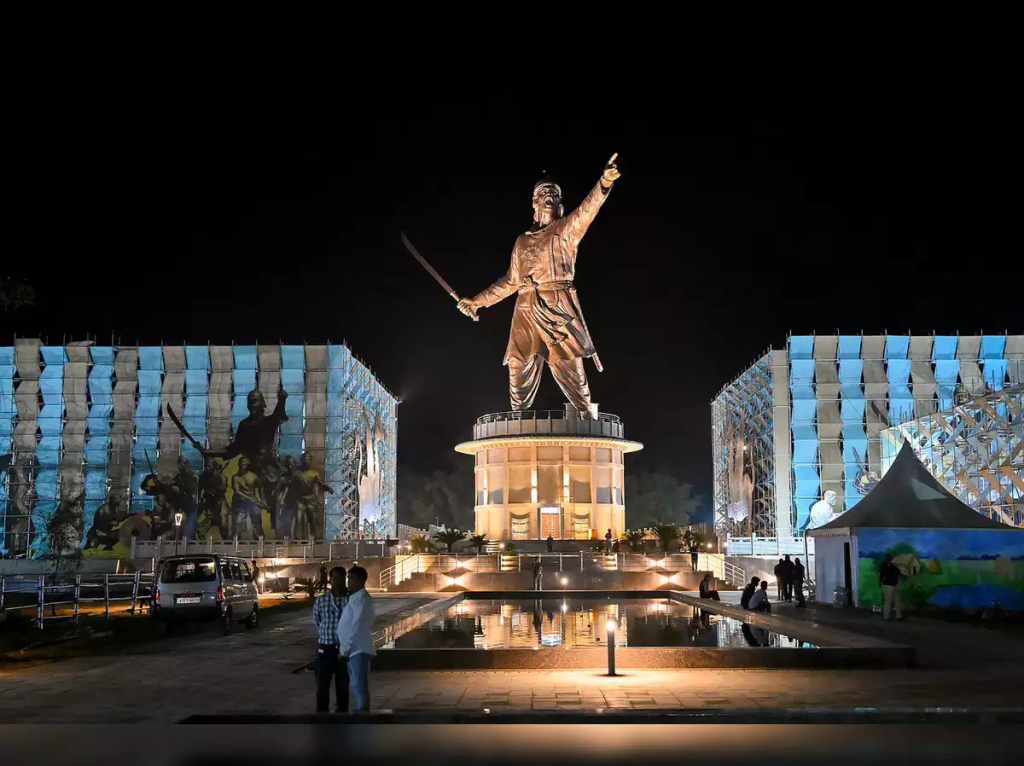
Here is the information about Jorhat in a tabular format:
| Category | Details |
|---|---|
| Introduction | Jorhat, known as the “Tea Capital of India,” is a vibrant town located in the northeastern state of Assam. It is one of the leading centers of tea production in the country and is steeped in rich cultural and historical heritage. Jorhat is also a gateway to Majuli, the world’s largest river island, and is known for its educational institutions, cultural events, and historical landmarks. |
| Major Attractions | 1. Jorhat Gymkhana Club: Established in 1876, it is the oldest golf course in Asia and a historic landmark in Jorhat. |
| 2. Cinnamora Tea Estate: The first tea garden established by the British in Assam, it offers insights into the history of tea cultivation in the region. | |
| 3. Thengal Manor: A colonial-era mansion that has been converted into a heritage hotel, offering a glimpse into the lifestyle of tea planters. | |
| 4. Tocklai Tea Research Institute: One of the oldest and largest tea research institutes in the world, where visitors can learn about the science of tea cultivation and processing. | |
| 5. Jorhat Science Centre and Planetarium: A popular educational attraction offering interactive exhibits and shows on astronomy and science. | |
| Activities & Experiences | 1. Tea Garden Tours: Explore the lush tea gardens, learn about the tea-making process, and enjoy a fresh cup of Assam tea at one of the many estates. |
| 2. Cultural Experiences: Participate in local festivals, visit the traditional Assamese villages, and explore the rich cultural heritage of the region. | |
| 3. Heritage Walks: Take a walk through Jorhat’s historic sites, including colonial buildings, temples, and the Jorhat Gymkhana Club. | |
| 4. Shopping: Visit local markets to buy traditional Assamese silk, handicrafts, and tea products. | |
| 5. Wildlife Exploration: Visit nearby wildlife sanctuaries to experience Assam’s rich biodiversity, including rare and endangered species. | |
| Best Time to Visit | October to March: The best time to visit Jorhat is from October to March when the weather is cool and pleasant, making it ideal for tea garden tours, sightseeing, and cultural activities. |
| Winter (November to February): Cool temperatures and clear skies, perfect for exploring the tea estates and historical landmarks. | |
| Spring (March to April): Mild temperatures and blooming flora make this period a great time for nature walks and garden tours. | |
| Nearby Attractions | 1. Majuli Island: Located about 20 km from Jorhat, Majuli is the world’s largest river island and a center of Assamese neo-Vaishnavite culture, known for its Satras and vibrant festivals. |
| 2. Hoollongapar Gibbon Sanctuary: Approximately 25 km from Jorhat, this sanctuary is home to India’s only ape species, the Hoolock Gibbon, and offers excellent opportunities for wildlife enthusiasts. | |
| 3. Dhekiakhowa Bornamghar: Around 15 km from Jorhat, this historic Namghar is an important site for Assamese neo-Vaishnavism, with a continuously burning lamp that has been alight for over 450 years. | |
| 4. Sivasagar: About 55 km from Jorhat, Sivasagar is known for its Ahom-era monuments, including the Rang Ghar, Talatal Ghar, and Sivadol Temple, reflecting the region’s rich history. | |
| 5. Kaziranga National Park: Located around 100 km from Jorhat, this UNESCO World Heritage Site is famous for its population of one-horned rhinoceroses and other wildlife. |
8. Haflong

Haflong
Introduction:
Haflong is the only hill station in the state of Assam, located in the Dima Hasao district. Known for its picturesque landscapes, serene environment, and pleasant climate, Haflong is often referred to as the “Switzerland of the East.” The town is surrounded by rolling hills, lush green forests, and beautiful lakes, making it an ideal destination for nature lovers and those seeking a peaceful retreat. Haflong is also home to various indigenous tribes, adding to its rich cultural diversity.
Major Attractions:
- Haflong Lake: The centerpiece of the town, Haflong Lake is one of the largest natural water bodies in Assam. The lake is a perfect spot for boating, picnics, and enjoying the serene surroundings.
- Maibong: An ancient town near Haflong, Maibong was once the capital of the Dimasa Kingdom. It is known for its historical significance and the ruins of temples and palaces, including the Ramchandi Temple.
- Jatinga: A small village near Haflong, Jatinga is famous for the mysterious phenomenon of bird suicides, where migratory birds are known to flock and mysteriously die. It is also a great spot for bird watching.
- Haflong Hill: The hills surrounding Haflong offer breathtaking views of the town and its surroundings. It’s an excellent place for nature walks and enjoying the panoramic vistas.
- Borail Range: The Borail Range near Haflong is a popular destination for trekking and exploring the diverse flora and fauna of the region.
Activities and Experiences:
- Boating on Haflong Lake: Enjoy a peaceful boat ride on Haflong Lake, surrounded by scenic beauty and the tranquility of nature.
- Trekking and Nature Walks: Explore the hills and forests around Haflong through trekking and nature walks, offering stunning views and a chance to connect with nature.
- Bird Watching in Jatinga: Visit Jatinga to witness the unique bird phenomenon and engage in bird watching, especially during the migratory season.
- Cultural Exploration: Interact with the local tribes and learn about their customs, traditions, and way of life. Haflong is home to various indigenous communities, including the Dimasa, Zeme, and Hmar tribes.
- Photography: Capture the scenic landscapes, lush greenery, and vibrant cultural life of Haflong, making it a perfect destination for photography enthusiasts.
Best Time to Visit:
The best time to visit Haflong is between October and April when the weather is pleasant and ideal for outdoor activities and sightseeing.
- October to February: The winter months offer cool and comfortable weather, perfect for exploring the town and enjoying the natural beauty of the region.
- March to April: Early summer is also a good time to visit, with mild temperatures and blooming flora adding to the town’s charm.
- May to September: The monsoon season brings heavy rainfall, which enhances the greenery but can make travel and outdoor activities challenging.
Nearby Attractions:
- Umrangso: Located about 50 km from Haflong, Umrangso is known for its scenic landscapes and the Kopili Hydro Electric Project. It’s a great spot for a day trip from Haflong.
- Panimoor Waterfall: Approximately 100 km from Haflong, Panimoor is a beautiful waterfall on the Kopili River, known for its scenic beauty and a popular spot for picnics.
- Silchar: About 100 km from Haflong, Silchar is a major town in southern Assam, known for its historical significance and cultural diversity.
- Barail Wildlife Sanctuary: Located near the Borail Range, this sanctuary is home to diverse wildlife and is a great destination for trekking and nature exploration.
- Dimapur: Approximately 150 km from Haflong, Dimapur is a city in neighboring Nagaland, known for its historical sites, including the Kachari Ruins and vibrant local markets.
9. Tinsukia

Here is the information about Tinsukia in a tabular format:
| Category | Details |
|---|---|
| Introduction | Tinsukia is a major commercial town in the state of Assam, known for its tea gardens, historical significance, and proximity to some of the most beautiful natural areas in the region. Located in the northeastern part of Assam, Tinsukia serves as a gateway to several important tourist destinations, including wildlife sanctuaries and historical sites. The town is also a hub of economic activities, particularly related to the tea and oil industries. |
| Major Attractions | 1. Dibru-Saikhowa National Park: One of the largest riverine islands in the world, this national park is a biodiversity hotspot, known for its rare and endangered species, including feral horses. |
| 2. Bell Temple (Tilinga Mandir): A unique temple dedicated to Lord Shiva, known for its thousands of bells of various sizes offered by devotees as a sign of fulfilled wishes. | |
| 3. Digboi Oil Refinery: The oldest operational oil refinery in Asia, Digboi is also known for its rich history and the World War II cemetery located nearby. | |
| 4. Margherita: A town near Tinsukia, famous for its coal mines, scenic tea gardens, and the Singpho Eco Lodge, which offers cultural experiences. | |
| 5. Bherjan-Borajan-Padumoni Wildlife Sanctuary: A small wildlife sanctuary near Tinsukia, home to a variety of wildlife, including primates and birds. | |
| Activities & Experiences | 1. Wildlife Safaris: Explore Dibru-Saikhowa National Park through boat rides and safaris, offering a chance to see diverse wildlife, including river dolphins and wild horses. |
| 2. Temple Visits: Visit the Bell Temple (Tilinga Mandir) to experience the spiritual atmosphere and participate in local rituals and prayers. | |
| 3. Tea Garden Tours: Take a tour of the tea gardens in and around Tinsukia, learning about the tea-making process and enjoying the scenic beauty of the plantations. | |
| 4. Historical Exploration: Explore the history of the oil industry in Assam with a visit to the Digboi Oil Refinery and the nearby World War II cemetery. | |
| 5. Bird Watching: Engage in bird watching at Dibru-Saikhowa National Park and Bherjan-Borajan-Padumoni Wildlife Sanctuary, where you can spot a variety of bird species. | |
| Best Time to Visit | October to March: The best time to visit Tinsukia is from October to March when the weather is cool and pleasant, making it ideal for wildlife exploration, sightseeing, and outdoor activities. |
| Winter (November to February): Cool temperatures and clear skies, perfect for exploring national parks and enjoying the natural beauty of the region. | |
| Spring (March to April): Mild temperatures and blooming flora make this period a great time for nature walks and wildlife spotting. | |
| Nearby Attractions | 1. Digboi: Located about 30 km from Tinsukia, Digboi is known for its historic oil refinery, World War II cemetery, and the Digboi Centenary Museum. |
| 2. Dibrugarh: Approximately 50 km from Tinsukia, Dibrugarh is a major city known as the “Tea City of India,” offering tea garden tours, river cruises, and cultural experiences. | |
| 3. Sadiya: About 70 km from Tinsukia, Sadiya is an ancient town with historical significance and beautiful landscapes, including the confluence of the Lohit and Brahmaputra rivers. | |
| 4. Ledo: Around 35 km from Tinsukia, Ledo is historically significant as the starting point of the Stillwell Road during World War II. | |
| 5. Namdapha National Park: Located further northeast, Namdapha is one of India’s largest national parks, known for its rich biodiversity and opportunities for trekking and wildlife exploration. |
10. Dibrugarh

Dibrugarh
Introduction:
Dibrugarh, often referred to as the “Tea City of India,” is a major city in the state of Assam, located in the northeastern part of India. It is one of the largest tea producers in the country and is known for its lush tea estates, vibrant culture, and scenic beauty. Dibrugarh is situated on the banks of the Brahmaputra River and serves as a major commercial and industrial hub in Assam. The city is a perfect blend of natural beauty, colonial history, and modern development, making it an essential stop for travelers exploring Assam.
Major Attractions:
- Tea Gardens: Dibrugarh is surrounded by vast expanses of tea gardens, where visitors can take guided tours, learn about the tea-making process, and enjoy the scenic beauty of the rolling tea plantations.
- Dehing Patkai Wildlife Sanctuary: Known as the “Amazon of the East,” this sanctuary is a biodiversity hotspot with rich flora and fauna, including elephants, leopards, and various bird species. It’s a paradise for wildlife enthusiasts and nature lovers.
- Jeypore Rainforest: One of the last remaining rainforests in India, Jeypore Rainforest is known for its dense greenery, rich biodiversity, and opportunities for trekking and bird watching.
- Radha Krishna Mandir: A beautiful temple in the heart of Dibrugarh, Radha Krishna Mandir is known for its serene atmosphere and intricate architecture. It’s a popular spot for both devotees and tourists.
- Bogibeel Bridge: The longest rail-cum-road bridge in India, Bogibeel Bridge spans the Brahmaputra River, offering stunning views and a vital connection between Dibrugarh and Dhemaji districts.
Activities and Experiences:
- Tea Garden Tours: Explore the sprawling tea gardens, where you can witness the tea plucking process, visit tea factories, and enjoy freshly brewed Assam tea.
- River Cruises on the Brahmaputra: Experience the tranquil beauty of the Brahmaputra River with a sunset cruise, offering scenic views of the surrounding landscapes and the city skyline.
- Wildlife Exploration: Visit the Dehing Patkai Wildlife Sanctuary and Jeypore Rainforest to explore the rich biodiversity, go on nature walks, and enjoy bird watching.
- Cultural Exploration: Engage with the local culture by visiting traditional Assamese villages, attending local festivals, and exploring the handicrafts and silk weaving traditions of the region.
- Photography: Capture the picturesque landscapes of tea gardens, the Brahmaputra River, and the diverse wildlife of the region. The Bogibeel Bridge and the lush greenery of Dibrugarh offer excellent photo opportunities.
Best Time to Visit:
The best time to visit Dibrugarh is between October and March when the weather is cool and pleasant, making it ideal for sightseeing, tea garden tours, and outdoor activities.
- October to February: The winter months offer cool and comfortable weather, perfect for exploring the tea estates and enjoying outdoor activities.
- March to April: Early summer is also a good time to visit, with mild temperatures and the tea gardens in full bloom.
- May to September: The monsoon season brings heavy rainfall, which enhances the greenery but can make travel and outdoor activities challenging.
Nearby Attractions:
- Tinsukia: Located about 50 km from Dibrugarh, Tinsukia is known for its tea gardens, Dibru-Saikhowa National Park, and the Bell Temple (Tilinga Mandir).
- Digboi: Approximately 80 km from Dibrugarh, Digboi is famous for having the oldest operational oil refinery in Asia and a World War II cemetery.
- Sivasagar: About 80 km from Dibrugarh, Sivasagar is a historic town known for its Ahom-era monuments, including the Rang Ghar, Talatal Ghar, and Sivadol Temple.
- Majuli Island: Located about 150 km from Dibrugarh, Majuli is the world’s largest river island and a cultural hub, known for its Satras and vibrant festivals.
- Naharkatia: A small town about 60 km from Dibrugarh, Naharkatia is known for its tea estates and oil fields, offering scenic views and a peaceful environment.
11. Silchar
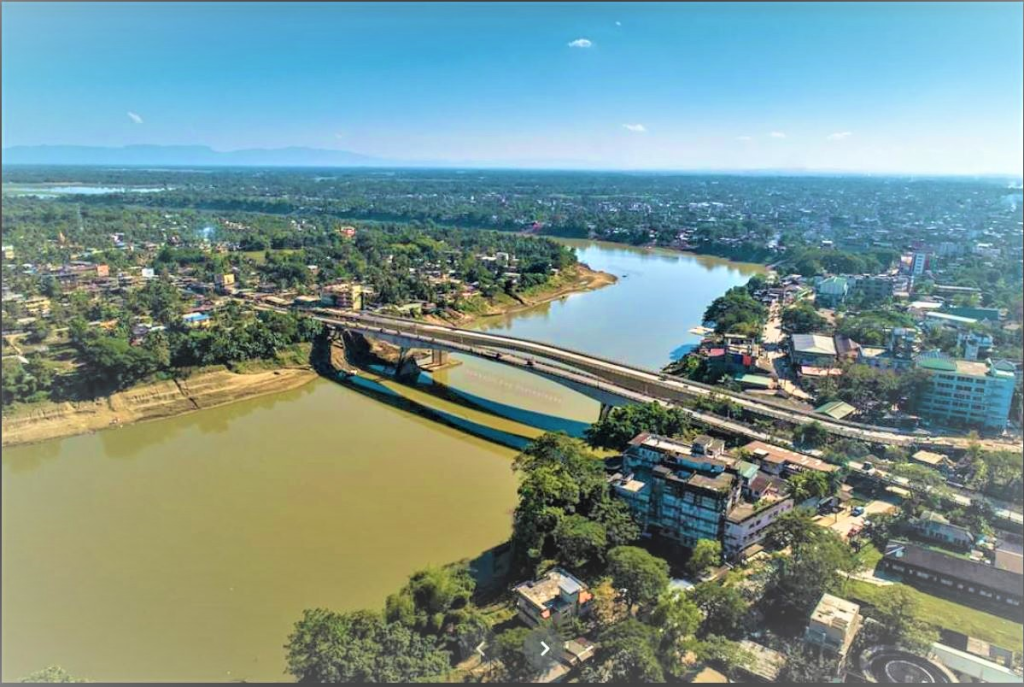
Here is the information about Silchar in a tabular format:
| Category | Details |
|---|---|
| Introduction | Silchar is a major city in the southern part of Assam, located in the Cachar district. It is often referred to as the “Gateway to Barak Valley” and is known for its rich cultural heritage, educational institutions, and scenic beauty. The city is a commercial and cultural hub of the region, offering a blend of historical sites, religious landmarks, and natural attractions. |
| Major Attractions | 1. Khaspur: An ancient capital of the Dimasa Kingdom, Khaspur is known for its historical ruins, including the Kachari Fort and other ancient structures that reflect the rich history of the region. |
| 2. Bhubaneshwar Temple: Located on top of the Bhuvan Hills, this temple is dedicated to Lord Shiva and is an important pilgrimage site, offering panoramic views of the surrounding area. | |
| 3. Maniharan Tunnel: A historical site associated with Hindu mythology, the Maniharan Tunnel is believed to have been used by Lord Krishna and is a popular spot for devotees and tourists alike. | |
| 4. Cachar Paper Mill: One of the largest paper mills in India, located near Silchar, offering insights into the paper manufacturing process and the industrial heritage of the region. | |
| 5. Iskcon Temple: A popular spiritual site in Silchar, dedicated to Lord Krishna, known for its serene environment and vibrant cultural activities. | |
| Activities & Experiences | 1. Historical Exploration: Visit the ancient sites of Khaspur and Maniharan Tunnel to delve into the region’s rich history and mythology. |
| 2. Temple Visits: Explore the various temples in and around Silchar, including the Bhubaneshwar Temple and Iskcon Temple, to experience the spiritual atmosphere of the city. | |
| 3. Cultural Experiences: Participate in local festivals, visit traditional markets, and explore the cultural diversity of Silchar, which is home to various communities and ethnic groups. | |
| 4. Nature Walks and Hiking: Enjoy nature walks and hiking experiences in the scenic hills surrounding Silchar, including the Bhuvan Hills. | |
| 5. Photography: Capture the scenic landscapes, historical ruins, and vibrant cultural scenes of Silchar and its surroundings. | |
| Best Time to Visit | October to March: The best time to visit Silchar is from October to March when the weather is cool and pleasant, making it ideal for sightseeing, temple visits, and outdoor activities. |
| Winter (November to February): Cool temperatures and clear skies, perfect for exploring historical sites and enjoying the natural beauty of the region. | |
| Spring (March to April): Mild temperatures and blooming flora make this period a great time for nature walks and visiting temples. | |
| Nearby Attractions | 1. Badarpur: Located about 25 km from Silchar, Badarpur is known for its scenic landscapes and the historic Badarpur Fort. |
| 2. Hailakandi: Approximately 55 km from Silchar, Hailakandi is known for its tea gardens and natural beauty, offering a peaceful retreat from the city. | |
| 3. Maibong: About 100 km from Silchar, Maibong is a historical town known for its ancient Dimasa Kingdom ruins and scenic beauty. | |
| 4. Jatinga: Around 90 km from Silchar, Jatinga is famous for the mysterious bird phenomenon where migratory birds flock to the area and die under unexplained circumstances. | |
| 5. Umrangso: Approximately 110 km from Silchar, Umrangso is known for its beautiful landscapes and the Kopili Hydro Electric Project, offering scenic views and nature experiences. |
12. Sualkuchi
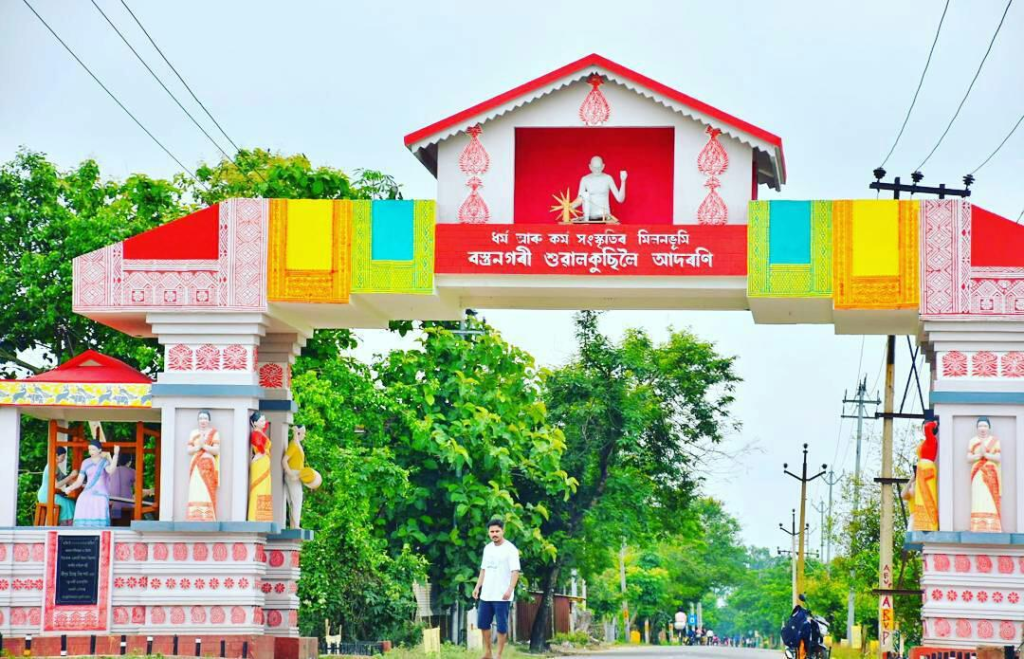
Sualkuchi
Introduction:
Sualkuchi, often referred to as the “Manchester of Assam,” is a picturesque village located on the northern bank of the Brahmaputra River, about 35 kilometers from Guwahati. It is renowned for its centuries-old tradition of silk weaving, particularly the production of Assam’s famous Muga silk, as well as Pat and Eri silks. Sualkuchi is one of the largest weaving villages in the world and is a major center of silk production in Assam. The village offers a unique blend of cultural heritage, craftsmanship, and scenic beauty, making it a must-visit destination for those interested in traditional arts and crafts.
Major Attractions:
- Silk Weaving Centers: Sualkuchi is home to numerous weaving centers where visitors can observe the intricate process of silk weaving, from spinning to dyeing and weaving. The village is particularly famous for producing Muga silk, known for its golden sheen, as well as Pat and Eri silks.
- Sualkuchi Market: The local market in Sualkuchi is a vibrant hub where visitors can purchase a variety of silk products, including sarees, mekhela chadors, and traditional Assamese garments. The market showcases the finest silk products, directly from the weavers.
- Brahmaputra Riverbank: The serene riverbank of the Brahmaputra provides a beautiful backdrop to Sualkuchi. Visitors can enjoy a peaceful walk along the riverbank, take in the scenic views, and experience the tranquility of the village.
- Local Temples: Sualkuchi is dotted with several small temples that reflect the spiritual and cultural fabric of the village. These temples offer a peaceful environment for visitors to relax and meditate.
Activities and Experiences:
- Silk Weaving Demonstrations: Witness the traditional process of silk weaving in the local weaving centers. Visitors can see artisans at work, learn about the different types of silk produced in the village, and even try their hand at weaving.
- Shopping for Silk Products: Explore the local market and purchase exquisite silk products directly from the weavers. Sualkuchi is famous for its Muga silk sarees, mekhela chadors, and other traditional Assamese silk garments.
- Cultural Exploration: Interact with the local weavers and learn about their lifestyle, customs, and the history of silk weaving in Sualkuchi. The village offers a rich cultural experience, deeply rooted in Assamese traditions.
- Photography: Capture the vibrant colors of the silk fabrics, the intricate patterns being woven on traditional looms, and the scenic beauty of the Brahmaputra Riverbank.
- Riverbank Walks: Enjoy leisurely walks along the Brahmaputra River, taking in the serene landscape and observing the daily life of the villagers.
Best Time to Visit:
The best time to visit Sualkuchi is between October and March when the weather is pleasant and conducive for sightseeing and exploring the village.
- October to February: The winter months offer cool and comfortable weather, perfect for exploring the weaving centers and enjoying the natural beauty of the area.
- March to April: Early summer is also a good time to visit, with mild temperatures and the silk production in full swing.
- May to September: The monsoon season brings heavy rainfall, which can make travel and outdoor activities challenging but enhances the greenery and beauty of the region.
Nearby Attractions:
- Hajo: Located about 24 km from Sualkuchi, Hajo is a unique pilgrimage center for Hindus, Muslims, and Buddhists. Notable sites include the Hayagriva Madhava Temple, Powa Mecca, and Kedareswara Temple.
- Guwahati: Approximately 35 km from Sualkuchi, Guwahati is the largest city in Assam, offering a blend of ancient temples, bustling markets, and cultural experiences. Key attractions include Kamakhya Temple, Umananda Island, and the Assam State Museum.
- Pobitora Wildlife Sanctuary: About 60 km from Sualkuchi, this sanctuary is known for its high density of one-horned rhinoceroses and offers excellent opportunities for wildlife safaris and bird watching.
- Madan Kamdev: Around 55 km from Sualkuchi, Madan Kamdev is an archaeological site with ancient temple ruins, often referred to as the “Khajuraho of Assam.”
- Saraighat Bridge: Located about 30 km from Sualkuchi, this bridge is the first rail-cum-road bridge built over the Brahmaputra River and offers panoramic views of the river and surrounding areas.
13. Hajo

Here is the information about Hajo in a tabular format:
| Category | Details |
|---|---|
| Introduction | Hajo is a small town located on the banks of the Brahmaputra River, about 24 kilometers from Guwahati in Assam. It is a unique pilgrimage center that holds significance for Hindus, Muslims, and Buddhists alike. Known for its ancient temples, mosques, and sacred sites, Hajo is a symbol of religious harmony and a popular destination for spiritual seekers and history enthusiasts. |
| Major Attractions | 1. Hayagriva Madhava Temple: An ancient Hindu temple dedicated to Lord Vishnu, believed to have been built in the 6th century. The temple is a major pilgrimage site, especially for Vaishnavites. |
| 2. Powa Mecca: A significant Islamic site in Hajo, Powa Mecca is a mosque believed to have been built with soil brought from Mecca. It is an important pilgrimage site for Muslims. | |
| 3. Kedareswara Temple: A sacred Shiva temple located on the Madanachal Hill, offering panoramic views of the surrounding area. The temple is an important site for Hindu devotees. | |
| 4. Ganesh Temple: A small but important temple dedicated to Lord Ganesha, known for its unique architecture and religious significance. | |
| 5. Madan Kamdev: An archaeological site near Hajo, famous for its ancient temple ruins that date back to the 10th-12th centuries. The site is often referred to as the “Khajuraho of Assam.” | |
| Activities & Experiences | 1. Pilgrimage Tours: Explore the various religious sites in Hajo, including the Hayagriva Madhava Temple, Powa Mecca, and Kedareswara Temple, to experience the spiritual harmony of the town. |
| 2. Historical Exploration: Visit Madan Kamdev and other ancient sites in and around Hajo to delve into the region’s rich history and architectural heritage. | |
| 3. Cultural Experiences: Participate in local festivals, interact with the diverse communities in Hajo, and learn about the town’s unique blend of cultures and traditions. | |
| 4. Photography: Capture the ancient temples, scenic landscapes, and cultural life of Hajo, making it an ideal destination for photography enthusiasts. | |
| 5. Nature Walks: Enjoy leisurely walks on the hills surrounding Hajo, including the Madanachal Hill, which offer beautiful views of the Brahmaputra River and the lush greenery. | |
| Best Time to Visit | October to March: The best time to visit Hajo is from October to March when the weather is pleasant, making it ideal for sightseeing, temple visits, and outdoor activities. |
| Winter (November to February): Cool and comfortable weather, perfect for exploring religious sites and enjoying the natural beauty of the area. | |
| Spring (March to April): Mild temperatures and blooming flora make this period a great time to visit temples and archaeological sites. | |
| Nearby Attractions | 1. Sualkuchi: Located about 24 km from Hajo, Sualkuchi is known as the “Manchester of Assam” and is famous for its traditional silk weaving industry, particularly Muga silk. |
| 2. Guwahati: Approximately 24 km from Hajo, Guwahati is the largest city in Assam, offering a blend of ancient temples, bustling markets, and cultural experiences. Key attractions include Kamakhya Temple, Umananda Island, and the Assam State Museum. | |
| 3. Madan Kamdev: About 12 km from Hajo, Madan Kamdev is an archaeological site with ancient temple ruins, often referred to as the “Khajuraho of Assam.” | |
| 4. Pobitora Wildlife Sanctuary: Approximately 50 km from Hajo, this sanctuary is known for its high density of one-horned rhinoceroses and offers excellent opportunities for wildlife safaris and bird watching. | |
| 5. Saraighat Bridge: Located about 24 km from Hajo, this bridge is the first rail-cum-road bridge built over the Brahmaputra River and offers panoramic views of the river and surrounding areas. |
14. Orang National Park

Introduction:
Orang National Park, also known as Rajiv Gandhi Orang National Park, is a small but significant wildlife sanctuary located on the northern banks of the Brahmaputra River in Assam, India. Often referred to as the “Mini Kaziranga,” this park is known for its rich biodiversity and is home to a variety of wildlife, including the endangered one-horned rhinoceros, Bengal tigers, elephants, and numerous species of birds. Covering an area of about 78.81 square kilometers, Orang National Park is one of the oldest game reserves in Assam and offers a pristine, less-crowded alternative to the more popular Kaziranga National Park.
Major Attractions:
- One-Horned Rhinoceros: Orang National Park is home to a significant population of the endangered one-horned rhinoceros, making it a prime spot for rhino sightings.
- Bengal Tigers: The park is also home to a population of Bengal tigers, and though elusive, these majestic creatures are a major attraction for wildlife enthusiasts.
- Elephants: Herds of wild elephants can often be spotted roaming through the park, adding to the park’s charm and biodiversity.
- Bird Watching: Orang is a haven for bird watchers, with over 200 species of birds, including migratory birds, the Bengal florican, and the great Indian hornbill.
- The Brahmaputra River: The park is bordered by the Brahmaputra River, providing scenic views and a habitat for a variety of aquatic species, including river dolphins.
Activities and Experiences:
- Jeep Safaris: Explore the park’s diverse landscapes and wildlife through guided jeep safaris, offering close encounters with rhinoceroses, tigers, elephants, and other wildlife.
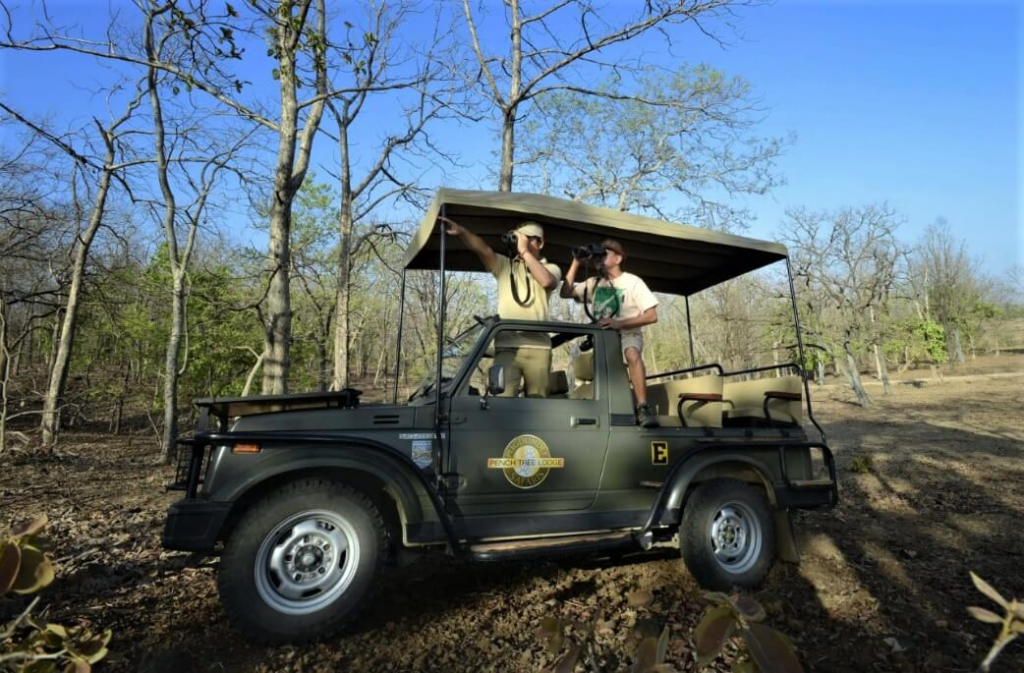
- Elephant Safaris: Experience the park from a unique vantage point on an elephant-back safari, which allows for a closer approach to wildlife in their natural habitat.

- Bird Watching: Engage in bird watching, particularly during the winter months when migratory birds visit the park. Spot rare species like the Bengal florican and the great Indian hornbill.

- Photography: Capture the stunning landscapes, diverse wildlife, and the serene beauty of the Brahmaputra River. Orang National Park is a photographer’s paradise, especially for wildlife and nature photography.

- Riverbank Walks: Enjoy peaceful walks along the banks of the Brahmaputra River, taking in the natural beauty and observing the park’s rich flora and fauna.

Best Time to Visit:
The best time to visit Orang National Park is between November and April when the weather is pleasant and the park is fully accessible for safaris and outdoor activities.
- November to February: The winter months offer cool and comfortable weather, making it the ideal time for wildlife spotting and enjoying the natural beauty of the park.
- March to April: Early summer is also a good time to visit, with mild temperatures and increased chances of spotting wildlife near water sources.
- May to October: The park is closed during the monsoon season due to heavy rainfall and flooding, which makes travel and wildlife viewing difficult.
Nearby Attractions:
- Kaziranga National Park: Located about 110 km from Orang, Kaziranga is a UNESCO World Heritage Site known for its population of one-horned rhinoceroses and other wildlife. It offers a more extensive wildlife experience.
- Tezpur: Approximately 60 km from Orang, Tezpur is a historic town known for its ancient temples, such as the Agnigarh and Mahabhairav Temple, as well as its scenic beauty along the Brahmaputra River.
- Nameri National Park: About 65 km from Orang, Nameri is known for its rich biodiversity, including tigers, elephants, and a variety of bird species, as well as opportunities for river rafting on the Jia Bhoroli River.
- Bhalukpong: Located about 75 km from Orang, Bhalukpong is a gateway to Arunachal Pradesh, offering scenic beauty and opportunities for river rafting and trekking.
- Pobitora Wildlife Sanctuary: Around 90 km from Orang, Pobitora is another wildlife sanctuary known for its high density of one-horned rhinoceroses and excellent bird-watching opportunities.
15. Nameri National Park

Here is the information about Nameri National Park in a tabular format:
| Category | Details |
|---|---|
| Introduction | Nameri National Park is located in the foothills of the Eastern Himalayas in the Sonitpur district of Assam, India. It is a haven for wildlife enthusiasts and bird watchers, known for its rich biodiversity and scenic beauty. The park is home to several endangered species, including tigers, elephants, and the white-winged wood duck. Nameri is also known for its pristine forests, lush greenery, and the Jia Bhoroli River, which flows through the park. |
| Major Attractions | 1. Jia Bhoroli River: The river is a major attraction, offering opportunities for river rafting, angling, and scenic views along its banks. |
| 2. White-Winged Wood Duck: Nameri is one of the few places where the endangered white-winged wood duck can be spotted, making it a prime destination for bird watchers. | |
| 3. Wildlife: The park is home to a variety of wildlife, including Bengal tigers, Asiatic elephants, leopards, Indian bison, and several species of deer. | |
| 4. Bird Watching: Nameri is a bird watcher’s paradise, with over 300 species of birds, including the great pied hornbill, black stork, and several migratory species. | |
| 5. Dense Forests and Scenic Landscapes: The park’s dense forests, rolling hills, and riverine landscapes offer stunning scenery and a tranquil environment. | |
| Activities & Experiences | 1. River Rafting: Enjoy river rafting on the Jia Bhoroli River, which offers both calm waters and exciting rapids amidst scenic surroundings. |
| 2. Bird Watching: Engage in bird watching tours to spot rare and exotic bird species, including the white-winged wood duck and the great pied hornbill. | |
| 3. Wildlife Safaris: Explore the park’s rich biodiversity through guided jeep safaris or nature walks, offering close encounters with tigers, elephants, and other wildlife. | |
| 4. Nature Walks and Trekking: Take guided nature walks and treks through the park’s dense forests and riverine landscapes, offering opportunities to explore the park up close. | |
| 5. Angling: Try your hand at angling in the Jia Bhoroli River, which is known for its golden mahseer and other fish species. | |
| Best Time to Visit | November to April: The best time to visit Nameri National Park is from November to April when the weather is pleasant, and the park is fully accessible for outdoor activities and wildlife viewing. |
| Winter (November to February): Cool and comfortable weather, ideal for bird watching, wildlife safaris, and enjoying the natural beauty of the park. | |
| Spring (March to April): Mild temperatures and blooming flora make this period a great time for nature walks, trekking, and river rafting. | |
| Nearby Attractions | 1. Bhalukpong: Located about 30 km from Nameri, Bhalukpong is a gateway to Arunachal Pradesh, offering scenic beauty, river rafting, and trekking opportunities. |
| 2. Tezpur: Approximately 35 km from Nameri, Tezpur is a historic town known for its ancient temples, such as Agnigarh and Mahabhairav Temple, and its scenic location along the Brahmaputra River. | |
| 3. Kaziranga National Park: About 100 km from Nameri, Kaziranga is a UNESCO World Heritage Site famous for its population of one-horned rhinoceroses and other wildlife. | |
| 4. Orang National Park: Approximately 65 km from Nameri, this park, also known as the Mini Kaziranga, offers excellent opportunities for wildlife safaris and bird watching. | |
| 5. Dirang: Around 85 km from Nameri, Dirang is a picturesque hill town in Arunachal Pradesh, known for its monasteries, apple orchards, and the scenic Sangti Valley. |
16. Barpeta
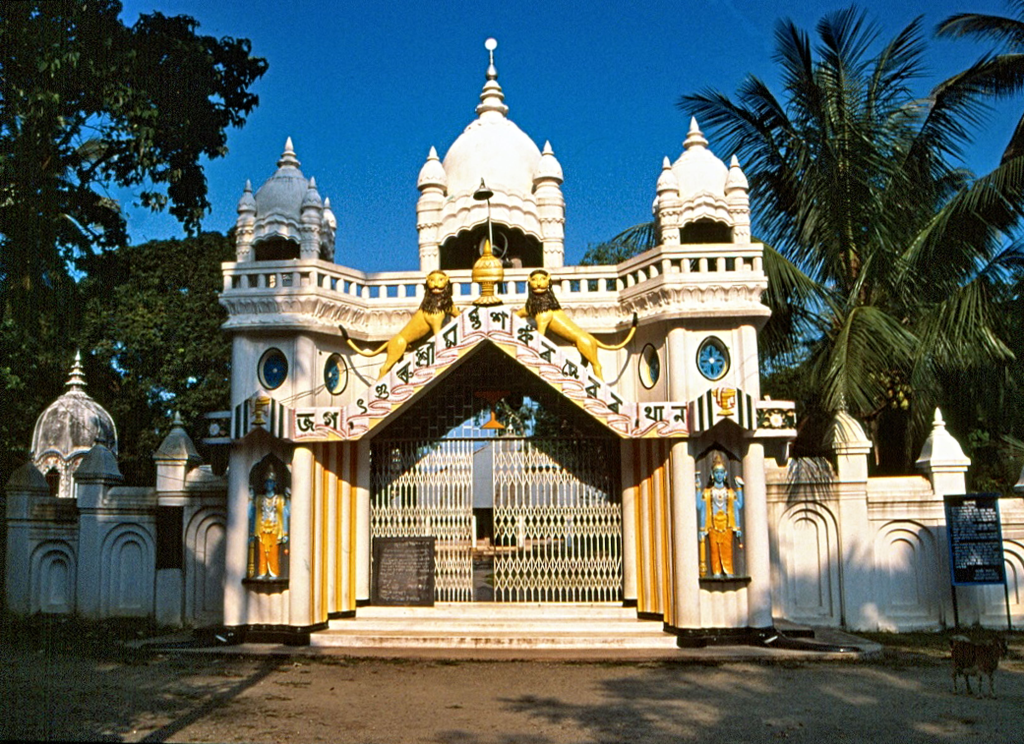
Introduction:
Barpeta is a culturally rich town located in the western part of Assam, India. Known as the “Land of Satras,” Barpeta is deeply associated with the neo-Vaishnavite movement led by the revered saint Srimanta Sankardeva. The town is famous for its Satras (Vaishnavite monasteries), which are centers of religious, cultural, and artistic activities. Barpeta is also known for its vibrant festivals, traditional crafts, and serene natural beauty, making it a significant destination for those interested in Assam’s cultural and spiritual heritage.
Major Attractions:
- Barpeta Satra: Founded by Madhavdeva, the chief disciple of Srimanta Sankardeva, Barpeta Satra is the most prominent Satra in the region. It serves as a spiritual and cultural hub, attracting devotees and visitors interested in Assam’s Vaishnavite traditions.

2. Manas National Park: Located on the outskirts of Barpeta, Manas National Park is a UNESCO World Heritage Site and a biosphere reserve known for its rich biodiversity, including tigers, elephants, and the rare golden langur.
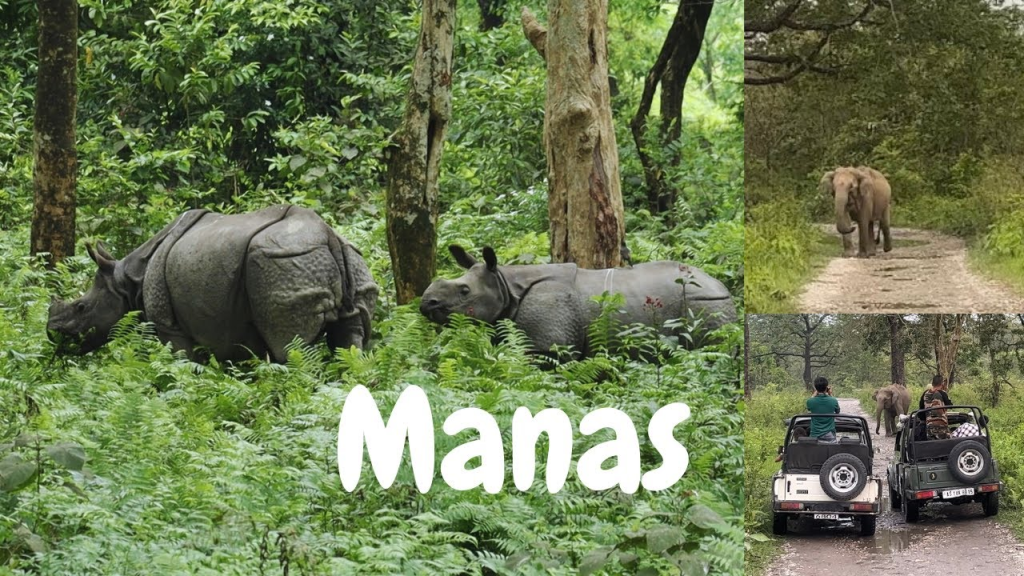
3. Baradi Satra: Another significant Satra in Barpeta, Baradi Satra was established by Sri Sri Madhavdeva and is known for its religious and cultural importance.

4. Dargah of Syed Shahnur Dewan: A revered Muslim shrine in Barpeta, the dargah is a symbol of the town’s religious harmony and attracts visitors from various faiths.

5. Beki River: Flowing through Barpeta, the Beki River is a tributary of the Brahmaputra and adds to the natural beauty of the town. The riverbanks are ideal for peaceful walks and enjoying the scenic views.
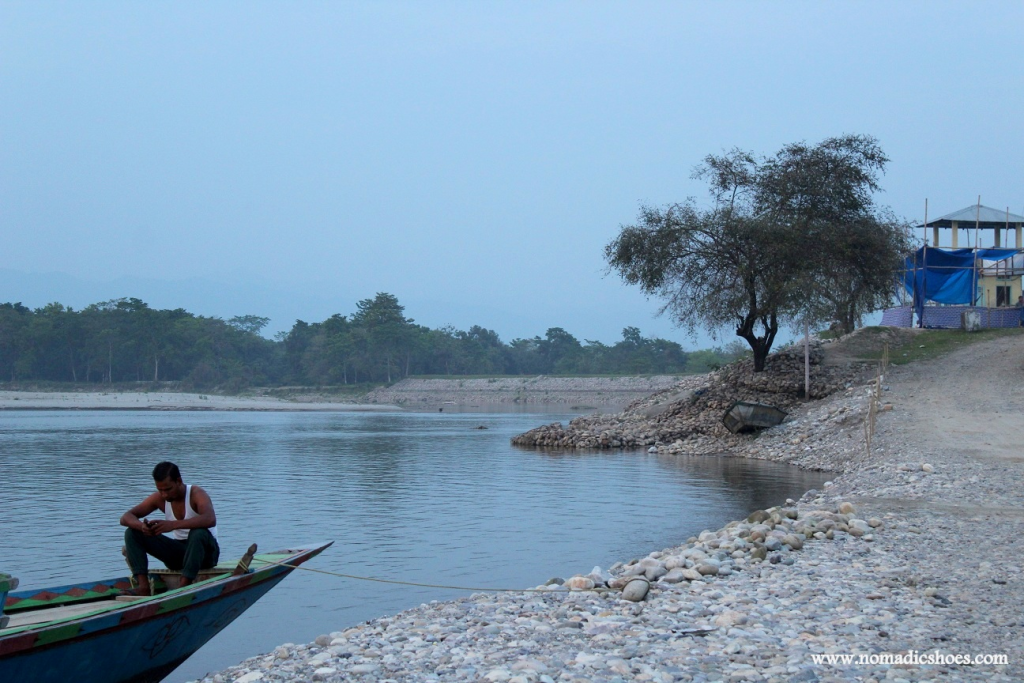
Activities and Experiences:
- Pilgrimage Tours: Explore the various Satras in Barpeta, including Barpeta Satra and Baradi Satra, to experience the spiritual and cultural essence of the town. Participate in prayer sessions, listen to religious discourses, and observe traditional dances and music.
- Wildlife Exploration: Visit Manas National Park for an unforgettable wildlife experience. Engage in jeep safaris or nature walks to spot tigers, elephants, rhinos, and other wildlife in their natural habitat.
- Cultural Exploration: Attend local festivals and events, such as Bihu and Raas Leela, to witness the vibrant culture of Barpeta. Engage with local artisans and learn about traditional crafts, including weaving and pottery.
- Photography: Capture the spiritual ambiance of the Satras, the natural beauty of the Beki River, and the diverse wildlife in Manas National Park. Barpeta offers numerous opportunities for photography enthusiasts.
- Nature Walks: Enjoy peaceful walks along the Beki River and in the rural areas surrounding Barpeta. The town’s serene environment and lush greenery provide a perfect backdrop for relaxation and nature appreciation.
Best Time to Visit:
The best time to visit Barpeta is between October and April when the weather is pleasant and conducive for sightseeing, temple visits, and wildlife exploration.
- October to February: The winter months offer cool and comfortable weather, ideal for visiting the Satras, exploring Manas National Park, and enjoying outdoor activities.
- March to April: Early summer is also a good time to visit, with mild temperatures and cultural events in full swing.
- May to September: The monsoon season brings heavy rainfall, which enhances the greenery but can make travel and outdoor activities challenging.
Nearby Attractions:
- Manas National Park: Located about 40 km from Barpeta, this UNESCO World Heritage Site is famous for its rich biodiversity, including tigers, elephants, and several endangered species.
- Hajo: Approximately 60 km from Barpeta, Hajo is a unique pilgrimage center for Hindus, Muslims, and Buddhists. Key attractions include Hayagriva Madhava Temple, Powa Mecca, and Kedareswara Temple.
- Sualkuchi: About 65 km from Barpeta, Sualkuchi is known as the “Manchester of Assam” and is famous for its traditional silk weaving industry, particularly Muga silk.
- Guwahati: Located around 90 km from Barpeta, Guwahati is the largest city in Assam, offering a blend of ancient temples, bustling markets, and cultural experiences. Key attractions include Kamakhya Temple, Umananda Island, and the Assam State Museum.
- Nalanda: About 50 km from Barpeta, Nalanda is known for its ancient educational institutions and temples, reflecting the region’s rich historical and cultural heritage.
17. Digboi

Here is the information about Digboi in a tabular format:
| Category | Details |
|---|---|
| Introduction | Digboi, known as the “Oil City of Assam,” is a historic town located in the Tinsukia district of Assam, India. It is home to Asia’s oldest operational oil refinery, which dates back to the late 19th century. Digboi’s rich history, colonial heritage, and natural beauty make it a unique destination for travelers interested in industrial history and scenic landscapes. The town is also surrounded by lush tea gardens and dense forests, adding to its charm. |
| Major Attractions | 1. Digboi Oil Refinery: The oldest operational oil refinery in Asia, established in 1901. The refinery is a symbol of India’s industrial heritage and offers a glimpse into the early days of the oil industry. |
| 2. Digboi War Cemetery: A well-maintained cemetery that honors the Allied soldiers who lost their lives during World War II. The cemetery is a poignant reminder of the town’s role in the war. | |
| 3. Digboi Centenary Museum: A museum that showcases the history of the oil industry in Digboi, with exhibits including old photographs, equipment, and artifacts related to the refinery’s history. | |
| 4. Golf Course: A picturesque golf course located amidst the tea gardens, offering a serene environment and stunning views of the surrounding landscape. | |
| 5. Margherita: A nearby town known for its coal mines, scenic tea gardens, and the Singpho Eco Lodge, which offers cultural experiences. | |
| Activities & Experiences | 1. Historical Exploration: Visit the Digboi Oil Refinery and the Digboi Centenary Museum to learn about the town’s rich industrial heritage and the history of oil production in India. |
| 2. War Cemetery Tour: Pay respects to the soldiers at the Digboi War Cemetery and learn about the town’s role during World War II. | |
| 3. Golfing: Enjoy a round of golf at the Digboi Golf Course, surrounded by lush greenery and the serene environment of Assam’s tea gardens. | |
| 4. Tea Garden Visits: Explore the nearby tea gardens, learn about the tea-making process, and enjoy the scenic beauty of the plantations. | |
| 5. Nature Walks and Bird Watching: Take peaceful nature walks in the surrounding forests and tea gardens, and engage in bird watching, as the area is home to various bird species. | |
| Best Time to Visit | October to March: The best time to visit Digboi is from October to March when the weather is cool and pleasant, making it ideal for sightseeing, outdoor activities, and exploring the town’s historical sites. |
| Winter (November to February): Cool temperatures and clear skies, perfect for visiting the oil refinery, museum, and war cemetery. | |
| Spring (March to April): Mild temperatures and blooming flora make this period a great time for nature walks and exploring the tea gardens. | |
| Nearby Attractions | 1. Tinsukia: Located about 30 km from Digboi, Tinsukia is known for its tea gardens, Dibru-Saikhowa National Park, and the Bell Temple (Tilinga Mandir). |
| 2. Dibrugarh: Approximately 80 km from Digboi, Dibrugarh is a major city known as the “Tea City of India,” offering tea garden tours, river cruises, and cultural experiences. | |
| 3. Margherita: About 15 km from Digboi, Margherita is known for its coal mines, scenic tea gardens, and the Singpho Eco Lodge, which offers insights into local culture and traditions. | |
| 4. Naharkatia: Around 50 km from Digboi, Naharkatia is known for its tea estates and oil fields, offering scenic views and a peaceful environment. | |
| 5. Dibru-Saikhowa National Park: Located about 50 km from Digboi, this national park is a biodiversity hotspot, known for its unique wetland ecosystem and diverse wildlife. |
18. Margherita

Margherita
Introduction:
Margherita is a small town located in the Tinsukia district of Assam, India. Known for its coal mining history, Margherita is named after the Italian queen, Margherita, as a tribute to the Italian engineers who helped establish the coal mines in the region. The town is surrounded by lush tea gardens, scenic landscapes, and dense forests, making it an attractive destination for nature lovers and history enthusiasts. Margherita also serves as a gateway to nearby tribal areas, offering a unique cultural experience.
Major Attractions:
- Coal Mines: Margherita is historically significant for its coal mines, which were among the first in the region. Visitors can explore the area and learn about the town’s mining heritage.
- Singpho Eco Lodge: A cultural retreat where visitors can experience the traditional lifestyle of the Singpho tribe, including their customs, crafts, and cuisine.
- Tea Gardens: The town is surrounded by beautiful tea gardens that offer scenic views and opportunities to learn about the tea-making process.
- Namdang Stone Bridge: A historic bridge built during the British era, showcasing the engineering skills of the time.
Activities and Experiences:
- Exploring Coal Mines: Visit the historic coal mines to learn about the town’s industrial heritage and the coal mining process.
- Cultural Experiences at Singpho Eco Lodge: Engage with the Singpho tribe, participate in traditional activities, and enjoy local cuisine at the eco-lodge.
- Tea Garden Tours: Take a guided tour of the nearby tea gardens, learn about tea cultivation, and enjoy the serene environment.
- Nature Walks: Enjoy peaceful walks through the lush landscapes surrounding Margherita, taking in the natural beauty of the region.
Best Time to Visit:
The best time to visit Margherita is between October and March when the weather is cool and pleasant, ideal for sightseeing and outdoor activities.
Nearby Attractions:
- Digboi: Located about 15 km from Margherita, Digboi is known for its historic oil refinery, the oldest in Asia, and the World War II cemetery.
- Tinsukia: Approximately 40 km from Margherita, Tinsukia is a commercial hub known for its tea gardens and the Dibru-Saikhowa National Park.
- Dibru-Saikhowa National Park: Around 50 km from Margherita, this national park is a biodiversity hotspot, known for its unique wetland ecosystem and diverse wildlife.
- Naharkatia: About 40 km from Margherita, Naharkatia is another town known for its tea estates and oil fields, offering scenic views and a peaceful environment.
19. North Cachar Hills
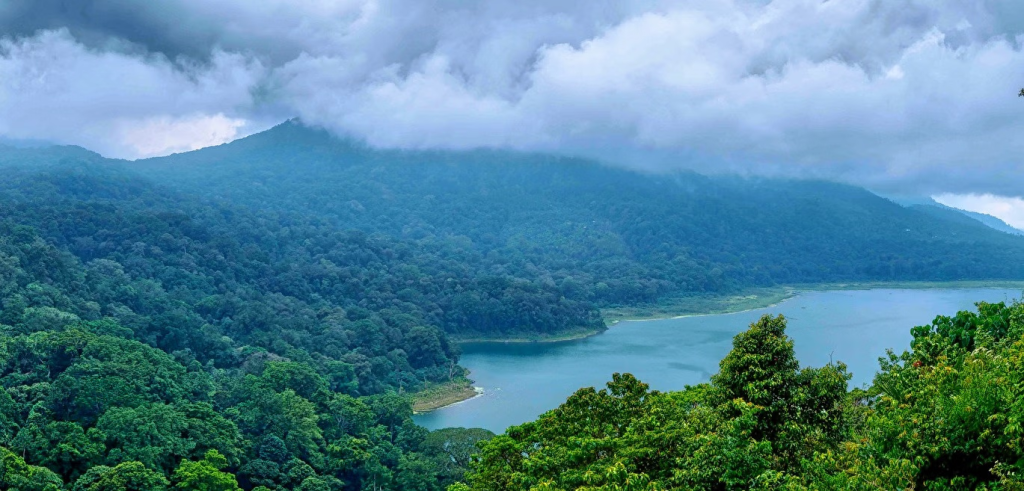
Here is the information about North Cachar Hills in a tabular format:
| Category | Details |
|---|---|
| Introduction | North Cachar Hills, also known as Dima Hasao, is a hilly district located in the southern part of Assam, India. The region is known for its scenic landscapes, rich cultural diversity, and tribal heritage. With its rolling hills, dense forests, and serene rivers, North Cachar Hills offers a tranquil retreat for nature lovers and those seeking to explore the unique cultures of the indigenous tribes. |
| Major Attractions | 1. Haflong: The only hill station in Assam, known for its picturesque landscapes, serene environment, and Haflong Lake. |
| 2. Jatinga: A small village famous for the mysterious phenomenon of bird suicides and a popular spot for bird watching. | |
| 3. Maibong: An ancient town that was once the capital of the Dimasa Kingdom, known for its historical ruins, including the Ramchandi Temple. | |
| 4. Umrangso: A scenic town known for the Kopili Hydro Electric Project and surrounded by beautiful landscapes. | |
| 5. Panimoor Waterfall: A beautiful waterfall on the Kopili River, known for its scenic beauty and a popular spot for picnics and nature walks. | |
| Activities & Experiences | 1. Trekking and Nature Walks: Explore the lush landscapes and hills through trekking and nature walks, offering stunning views and a close connection with nature. |
| 2. Bird Watching: Visit Jatinga during the migratory season to observe the mysterious bird phenomenon and enjoy bird watching in the surrounding areas. | |
| 3. Cultural Exploration: Engage with the local tribes, including the Dimasa, Zeme, and Hmar communities, to learn about their customs, traditions, and way of life. | |
| 4. Historical Exploration: Visit the ancient ruins in Maibong to delve into the history of the Dimasa Kingdom and explore the region’s rich cultural heritage. | |
| 5. Photography: Capture the scenic landscapes, vibrant tribal culture, and the unique phenomena of the region, making it a perfect destination for photography enthusiasts. | |
| Best Time to Visit | October to April: The best time to visit North Cachar Hills is from October to April when the weather is pleasant, making it ideal for sightseeing, trekking, and cultural exploration. |
| Winter (November to February): Cool and comfortable weather, perfect for exploring the hill station of Haflong and enjoying outdoor activities. | |
| Spring (March to April): Mild temperatures and blooming flora make this period a great time for nature walks, bird watching, and visiting waterfalls. | |
| Nearby Attractions | 1. Silchar: Located about 110 km from Haflong, Silchar is a major town known for its rich cultural heritage and proximity to several natural attractions. |
| 2. Kaziranga National Park: Approximately 200 km from North Cachar Hills, this UNESCO World Heritage Site is famous for its population of one-horned rhinoceroses and other wildlife. | |
| 3. Diphu: About 85 km from Haflong, Diphu is a town known for its scenic beauty and cultural diversity, offering a peaceful retreat and opportunities for cultural exploration. | |
| 4. Nagaon: Around 150 km from North Cachar Hills, Nagaon is known for its cultural sites, including the Bordowa Satra, and its proximity to Kaziranga National Park. | |
| 5. Shillong: Located around 250 km from Haflong, Shillong is the capital of Meghalaya and is known for its vibrant culture, beautiful landscapes, and colonial-era architecture. |
20. Biswanath Ghat
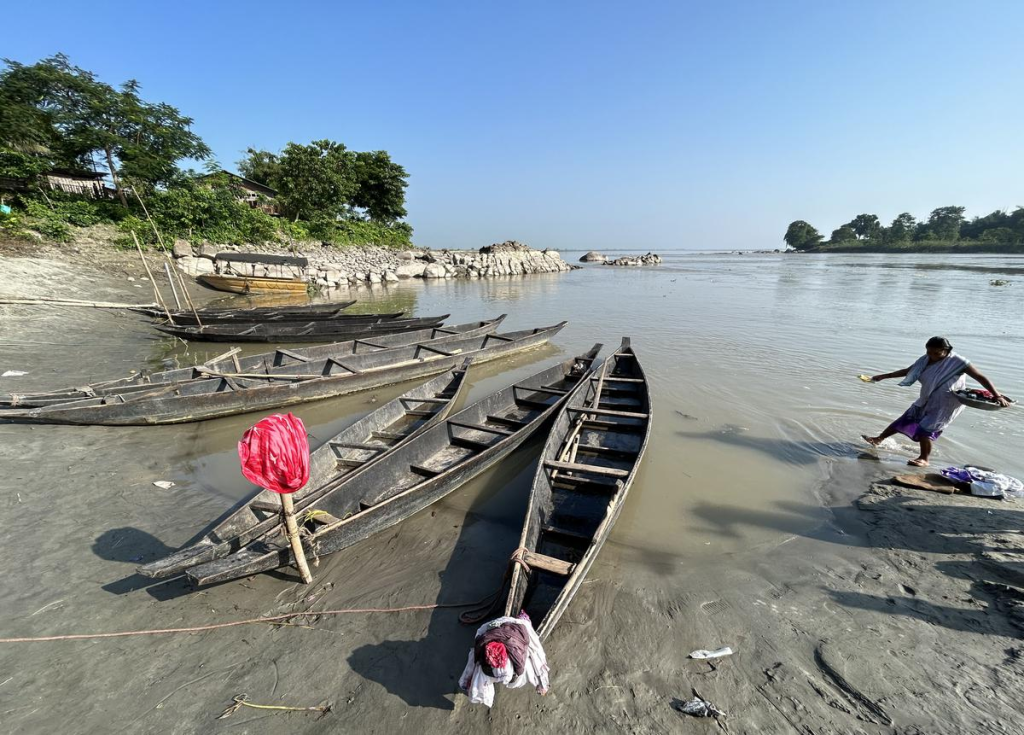
Here is the information about Biswanath Ghat in a tabular format:
| Category | Details |
|---|---|
| Introduction | Biswanath Ghat, often referred to as the “Gupta Kashi of Assam,” is a scenic riverside town located on the northern bank of the Brahmaputra River in Assam. Known for its ancient temples and serene environment, Biswanath Ghat is a significant pilgrimage site and a popular destination for those seeking tranquility and spiritual solace. The town offers a beautiful blend of natural beauty and cultural heritage, making it a must-visit spot in Assam. |
| Major Attractions | 1. Biswanath Temple: An ancient temple dedicated to Lord Shiva, it is the main religious attraction in the town and draws devotees from across the region. |
| 2. Brahmaputra River: The mighty Brahmaputra River provides a stunning backdrop to the town and offers opportunities for river cruises and scenic walks along the riverbank. | |
| 3. Panch Ali Market: A vibrant local market where visitors can experience the local culture, shop for traditional Assamese goods, and interact with the local community. | |
| 4. Biswanath Ghat: The ghat itself is a serene and picturesque spot, ideal for relaxing by the river and enjoying the peaceful environment. | |
| 5. Garakhia Than: A lesser-known religious site near Biswanath Ghat, this temple is dedicated to Lord Shiva and offers a tranquil setting for meditation and prayer. | |
| Activities & Experiences | 1. Temple Visits: Explore the ancient temples in Biswanath Ghat, including the Biswanath Temple and Garakhia Than, to experience the spiritual atmosphere of the town. |
| 2. River Cruises on the Brahmaputra: Enjoy a scenic river cruise on the Brahmaputra River, offering beautiful views of the surrounding landscape and the town’s picturesque setting. | |
| 3. Cultural Exploration: Visit the Panch Ali Market to experience the local culture, interact with the residents, and shop for traditional Assamese products, such as handwoven textiles and handicrafts. | |
| 4. Photography: Capture the stunning landscapes along the Brahmaputra River, the historic temples, and the vibrant life of the local market, making Biswanath Ghat a great destination for photography enthusiasts. | |
| 5. Nature Walks: Take leisurely walks along the riverbank and in the surrounding areas, enjoying the serene environment and observing the local flora and fauna. | |
| Best Time to Visit | October to April: The best time to visit Biswanath Ghat is from October to April when the weather is pleasant, making it ideal for temple visits, river cruises, and outdoor activities. |
| Winter (November to February): Cool and comfortable weather, perfect for exploring the temples, enjoying river cruises, and participating in local festivals. | |
| Spring (March to April): Mild temperatures and blooming flora make this period a great time for nature walks and experiencing the vibrant local culture. | |
| Nearby Attractions | 1. Tezpur: Located about 40 km from Biswanath Ghat, Tezpur is a historic town known for its ancient temples, such as Agnigarh and Mahabhairav Temple, and its scenic beauty along the Brahmaputra River. |
| 2. Nameri National Park: Approximately 60 km from Biswanath Ghat, this national park is known for its rich biodiversity, including tigers, elephants, and a variety of bird species. | |
| 3. Kaziranga National Park: About 100 km from Biswanath Ghat, this UNESCO World Heritage Site is famous for its population of one-horned rhinoceroses and other wildlife. | |
| 4. Majuli Island: Located around 150 km from Biswanath Ghat, Majuli is the world’s largest river island and a cultural hub known for its Satras (Vaishnavite monasteries) and vibrant festivals. | |
| 5. Sualkuchi: Approximately 120 km from Biswanath Ghat, Sualkuchi is known as the “Manchester of Assam” and is famous for its traditional silk weaving industry, particularly Muga silk. |
21. Morigaon

Here is the information about Morigaon in a tabular format:
| Category | Details |
|---|---|
| Introduction | Morigaon is a district in Assam, India, known for its rich cultural heritage and natural beauty. It is home to the Pobitora Wildlife Sanctuary, which boasts one of the highest densities of one-horned rhinoceroses in the world. Morigaon is also famous for its historical and religious significance, with several ancient temples and cultural sites scattered across the district. |
| Major Attractions | 1. Pobitora Wildlife Sanctuary: A major attraction in Morigaon, known for its high density of one-horned rhinoceroses, making it a popular spot for wildlife enthusiasts and photographers. |
| 2. Suryapahar: An ancient archaeological site featuring numerous rock-cut sculptures and ruins, reflecting the region’s historical and religious significance. | |
| 3. Mayong: Known as the “Land of Black Magic,” Mayong is a village in Morigaon famous for its association with ancient practices of magic and witchcraft, as well as its rich cultural heritage. | |
| 4. Bordowa Satra: The birthplace of Srimanta Sankardeva, the great Vaishnavite saint, Bordowa Satra is an important pilgrimage site for followers of the Vaishnavite tradition. | |
| 5. Jagiroad: An industrial town in Morigaon known for its paper mills and scenic beauty, offering a glimpse into the region’s industrial development and natural landscapes. | |
| Activities & Experiences | 1. Wildlife Safaris: Explore Pobitora Wildlife Sanctuary through guided jeep safaris or elephant rides to spot one-horned rhinoceroses and other wildlife. |
| 2. Cultural Exploration: Visit Mayong to learn about its mysterious history of black magic and explore the traditional culture and customs of the local communities. | |
| 3. Historical Exploration: Discover the ancient ruins and rock-cut sculptures at Suryapahar, offering insights into the region’s rich historical and religious past. | |
| 4. Pilgrimage Tours: Visit Bordowa Satra, the birthplace of Srimanta Sankardeva, to experience the spiritual significance of the site and learn about the Vaishnavite tradition. | |
| 5. Photography: Capture the diverse wildlife at Pobitora, the scenic landscapes of Morigaon, and the ancient ruins at Suryapahar, making it a great destination for photography enthusiasts. | |
| Best Time to Visit | October to March: The best time to visit Morigaon is from October to March when the weather is cool and pleasant, making it ideal for wildlife safaris, sightseeing, and cultural exploration. |
| Winter (November to February): Cool temperatures and clear skies, perfect for exploring wildlife sanctuaries, historical sites, and religious places. | |
| Spring (March to April): Mild temperatures and blooming flora make this period a great time for nature walks, wildlife viewing, and visiting cultural sites. | |
| Nearby Attractions | 1. Guwahati: Located about 80 km from Morigaon, Guwahati is the largest city in Assam, offering a blend of ancient temples, bustling markets, and cultural experiences. |
| 2. Hajo: Approximately 60 km from Morigaon, Hajo is a unique pilgrimage center for Hindus, Muslims, and Buddhists, known for its temples, mosques, and sacred sites. | |
| 3. Kaziranga National Park: About 110 km from Morigaon, this UNESCO World Heritage Site is famous for its population of one-horned rhinoceroses and other wildlife. | |
| 4. Sualkuchi: Around 90 km from Morigaon, Sualkuchi is known as the “Manchester of Assam” and is famous for its traditional silk weaving industry, particularly Muga silk. | |
| 5. Nagaon: Located about 40 km from Morigaon, Nagaon is known for its cultural sites, including the Bordowa Satra, and its proximity to Kaziranga National Park. |
software developer at cotocus private limited commpany
